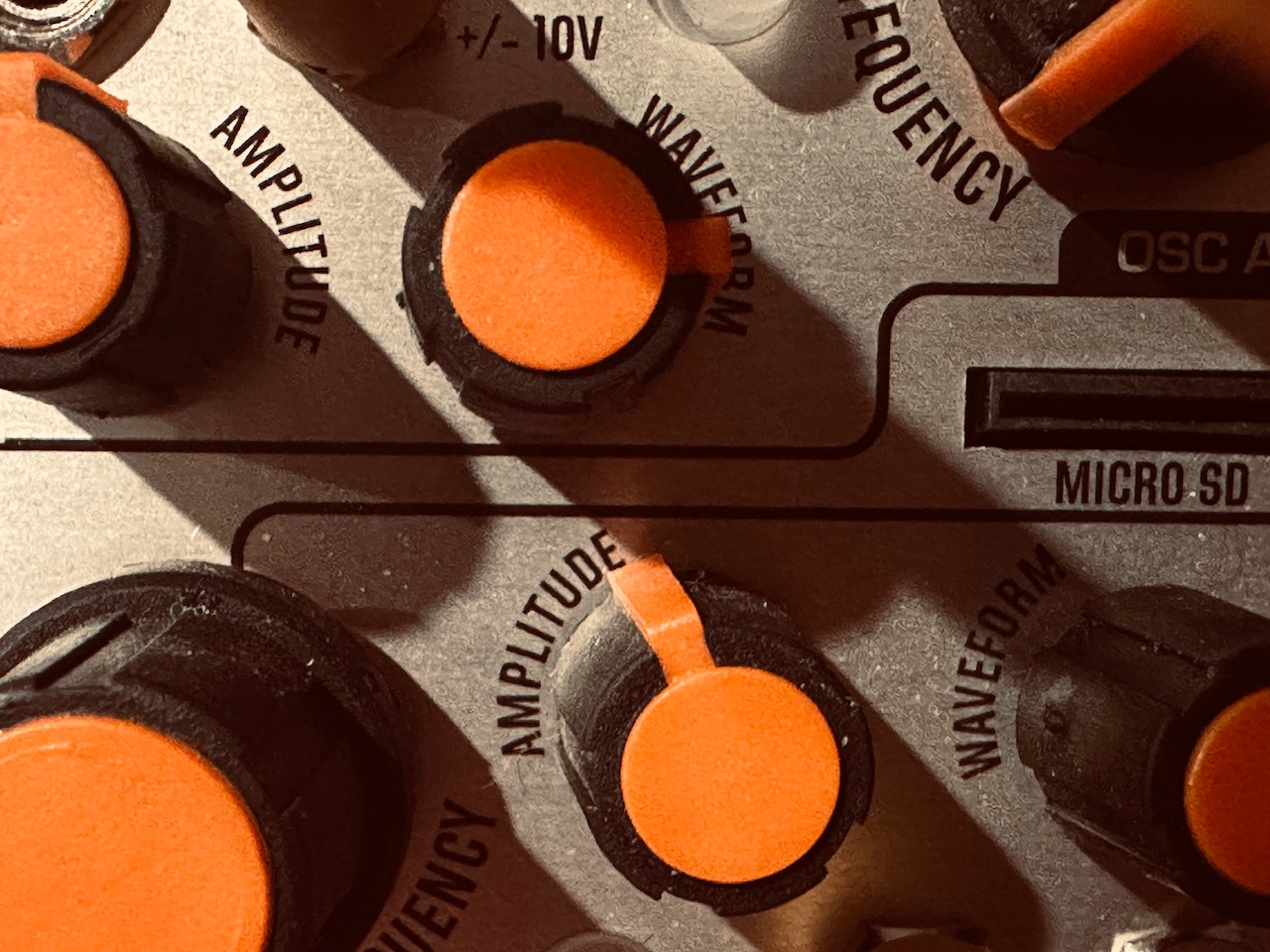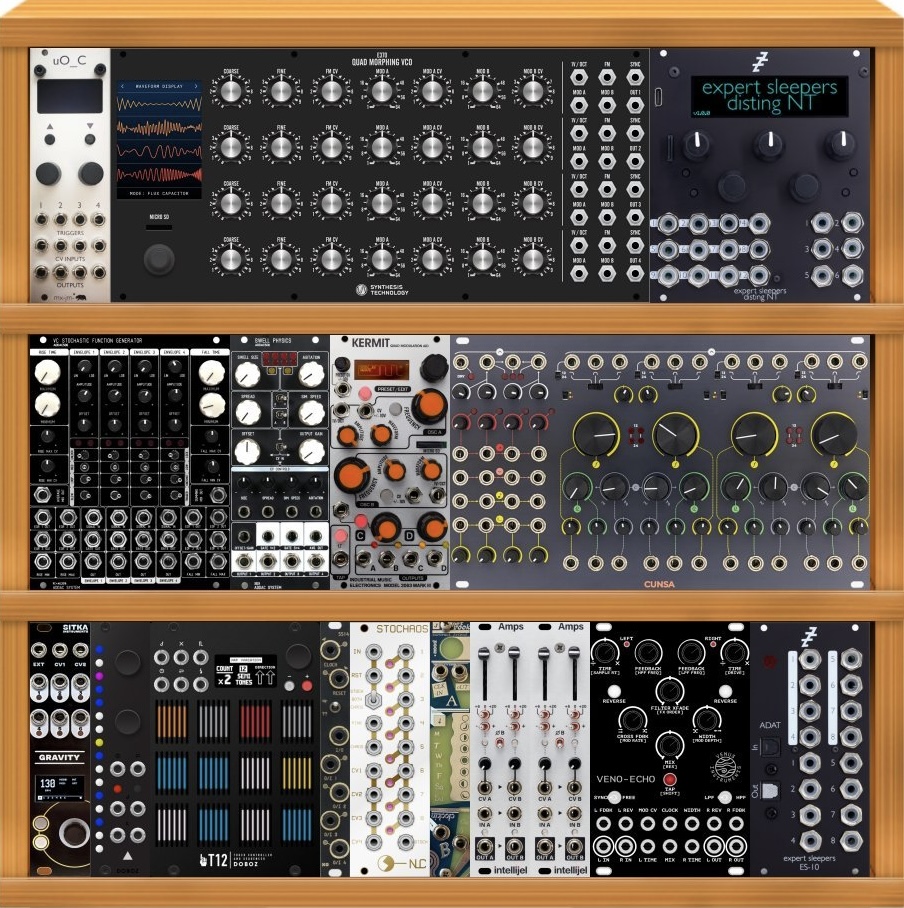I like wavetables and I like drones. Jamuary 6 saw both. A modulated quad wavetable LFO modulating the levels of a quad wavetable oscillator. It’s a patch I’ve been wanting to try for a while, and Jamuary is the perfect time to experiment with new techniques.
There are a lot of moving parts in this patch. The base creating the ever-changing drone is four unsynced LFOs from Kermit Mk3 controlling the levels of the four outputs from the E370 in the Intellijel Amps. These four outputs were patched to the ST Modular Sum Mix & Pan and then to the mixer. The pan CV inputs of the latter three channels were modulated by the Addac506 Stochastic Function Generator. The stereo signal from Sum Mix & Pan went to both the output as well as to a second mixer for summing to mono before being routed to the Verbos Multi-Delay Processor. The mono output of the MDP, which only has the dry signal,1 went to the output mixer, while two of the taps were routed to the Verbos Scan & Pan for hard panning left and right. All three of these signals were mixed and sent to the output.
Although I like the drive the MDP created, it largely defeated the panning of the three E370 outputs. I’d have been better served to run the stereo signal from the Sum Mix & Pan to a stereo distortion for some added drive so as not to throw a cover over subtle movement in the stereo space, but I do like the overall result. The MDP is a fantastic source for overdrive, and is a different sort than a full blown distortion like Mimosa. It’s deep and warm, like a fuzzy blanket on a cold winter day.
There’s lots of modulation too, with the bulk of it being supplied by the Nonlinearcircuits The Hypster fed a Let’s Splosh, with its outputs modulating the waves in both the E370, and three of the four channels of Kermit. Let’s Splosh self-modulated both Gain and Damping to keep its outputs in constant flux.
To accompany the drone proper, I sent the panning wavetables from the Sum Mix & Pan and stereo delay taps from the MDP to a pair of unmodulated Dradds. Both are in Grain Mode, and both are time stretching, with the left channel in reverse at about 20% speed and the and the right channel in forward at a slow crawl. It’s a bit difficult to pick out in the mix, but the overall sound is very different without it, and the final result benefits greatly with it.
The final touch to the patch are the drips and crickets. This oscillator and envelope are both from Falistri, sent through the Holocene Non-Linear Memory Machine. Pitch and random triggering was provided by Sapel. The last free channel of the Addac506 controlled both the Freeze and Scanning of the buffer. Its EOF trigger turned Freeze on and off, with the EOR gate output gating the function output in a VCA, which was scanning the buffer. This little sub-patch took a little while to figure out, but the results are rewarding. I’d been wanting to mess with scanning the buffer of the NLMM ever since I heard this patch by Ras Thavas, and today seemed like the day. It was a fun patch that I’ll be sure to explore further in the future.
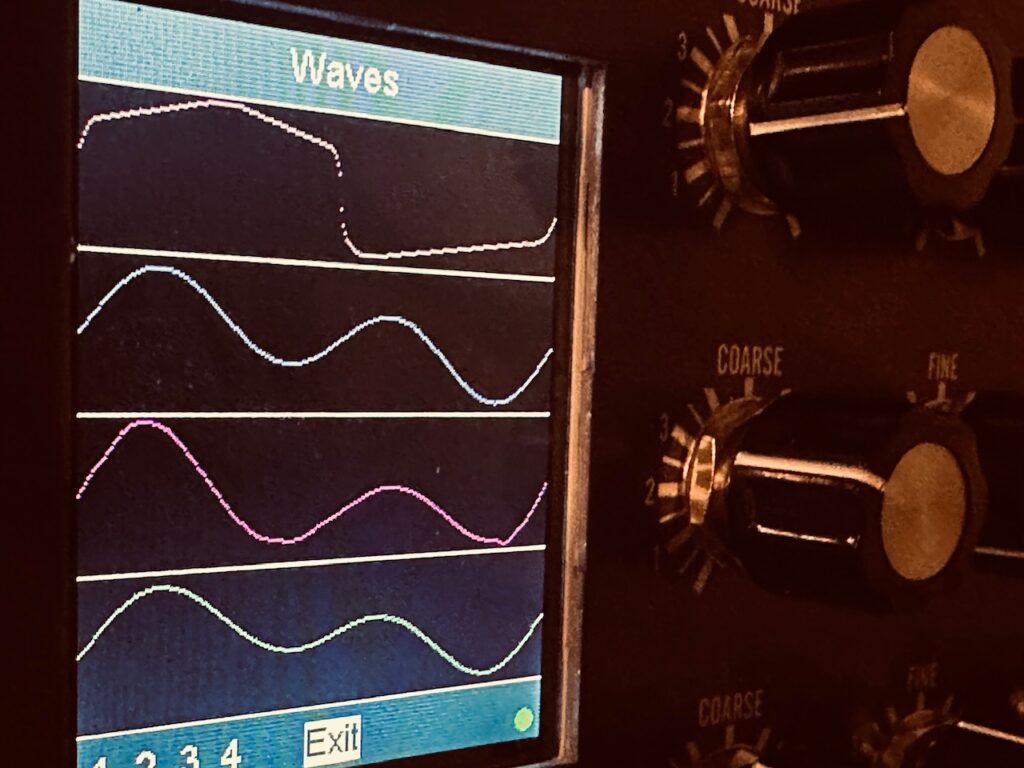
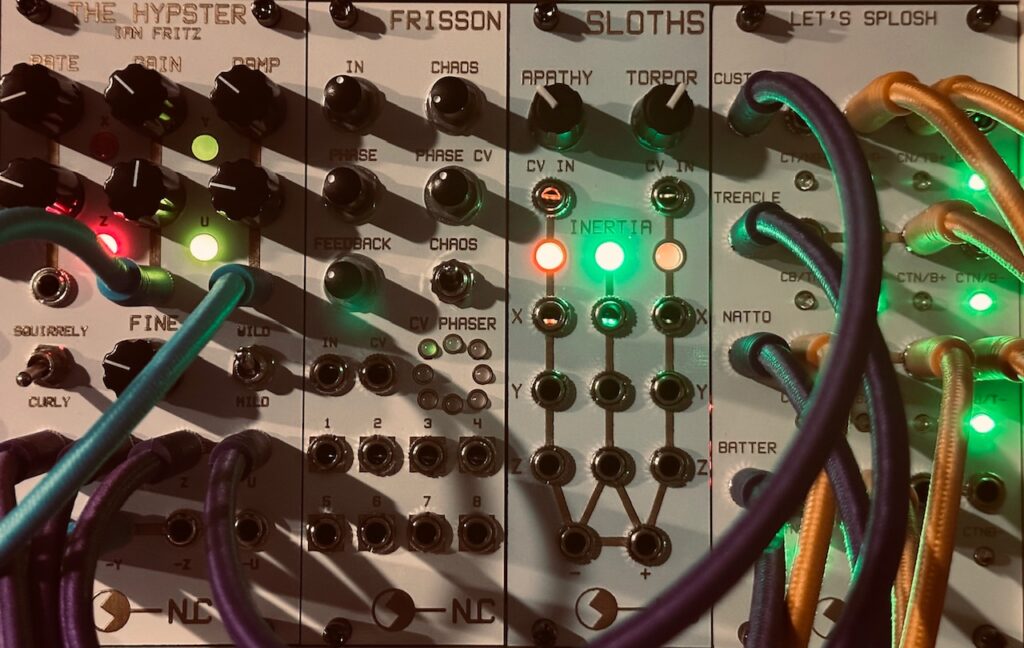
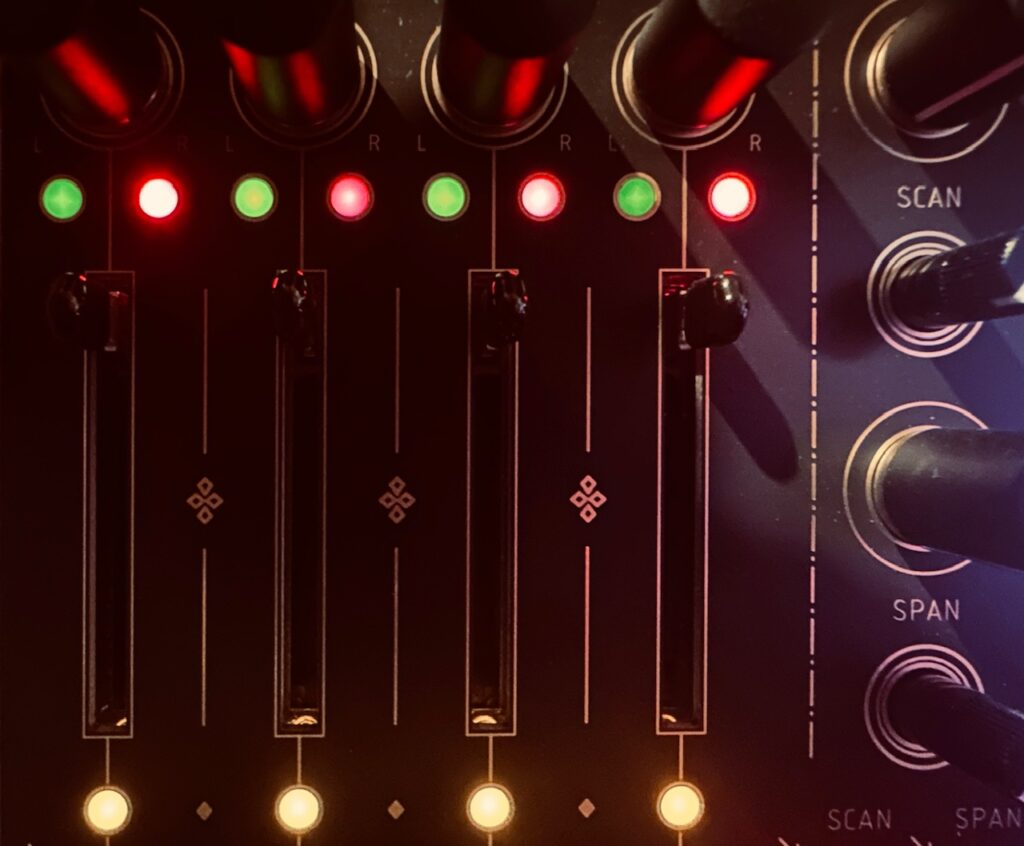
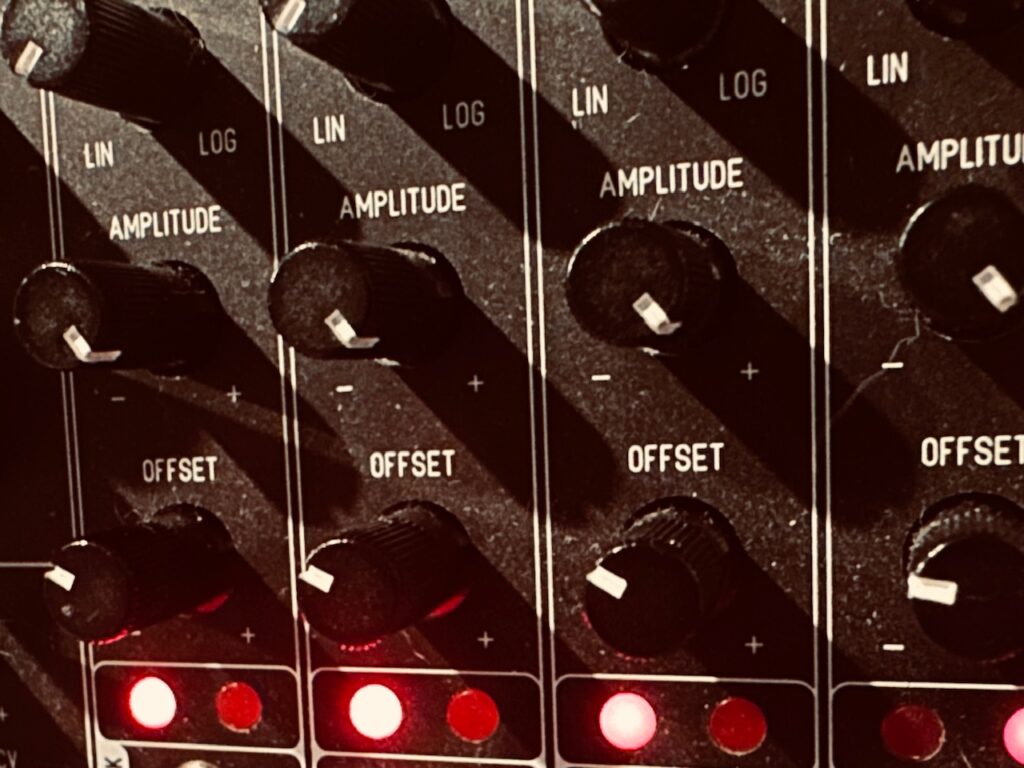
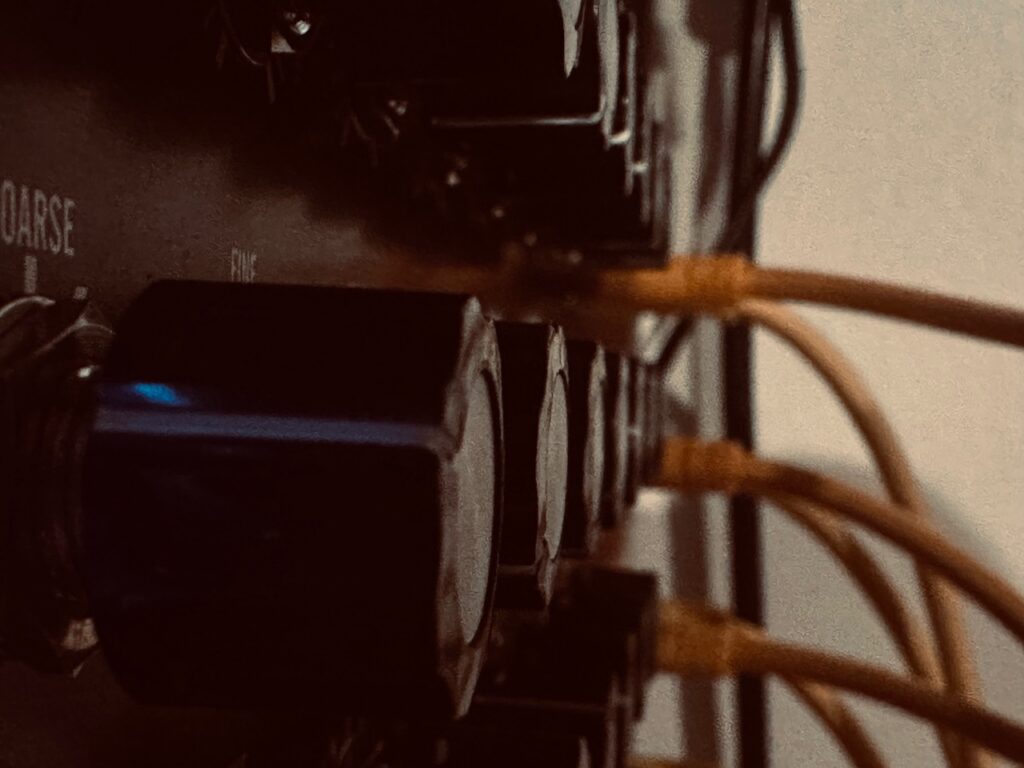
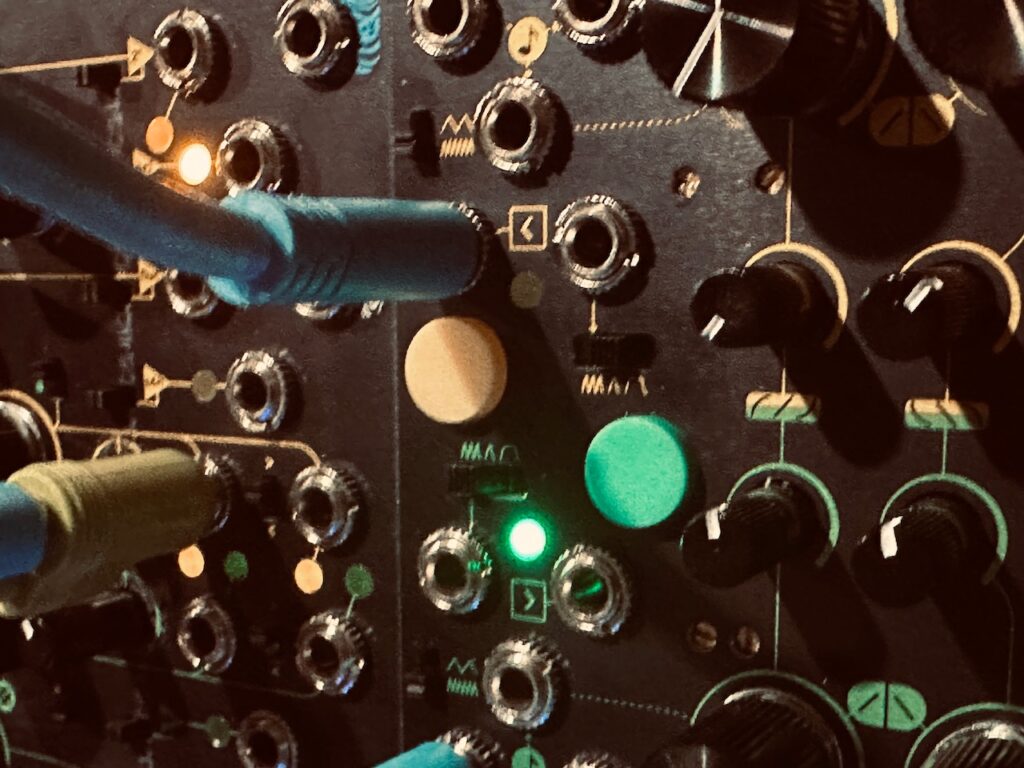
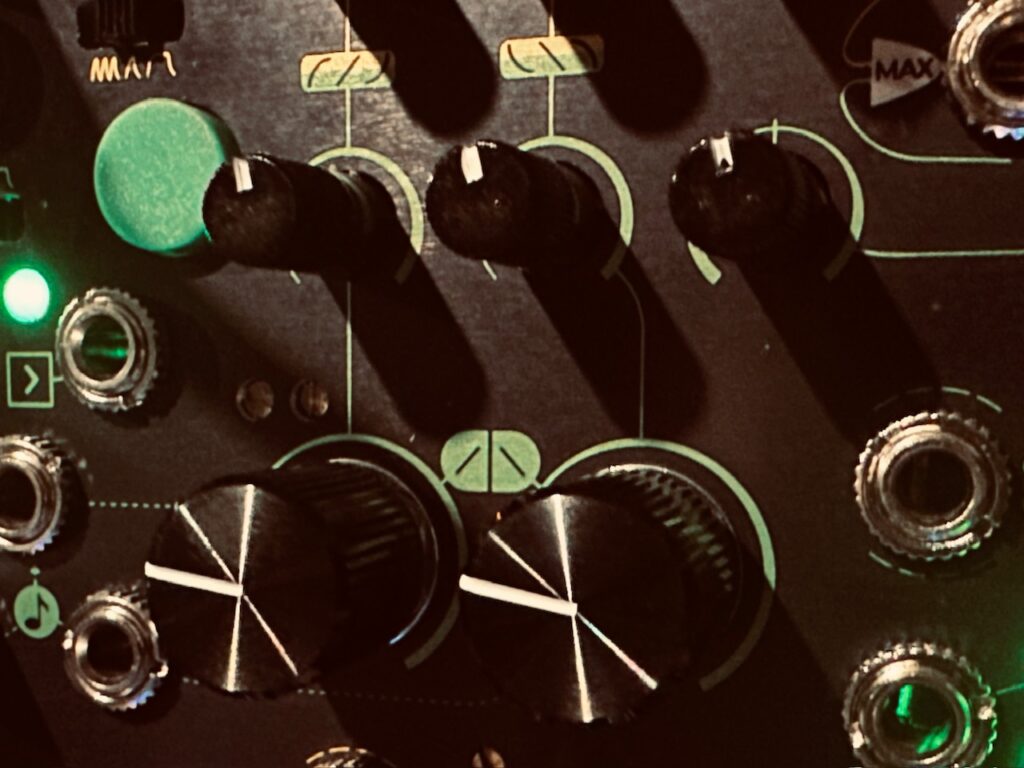
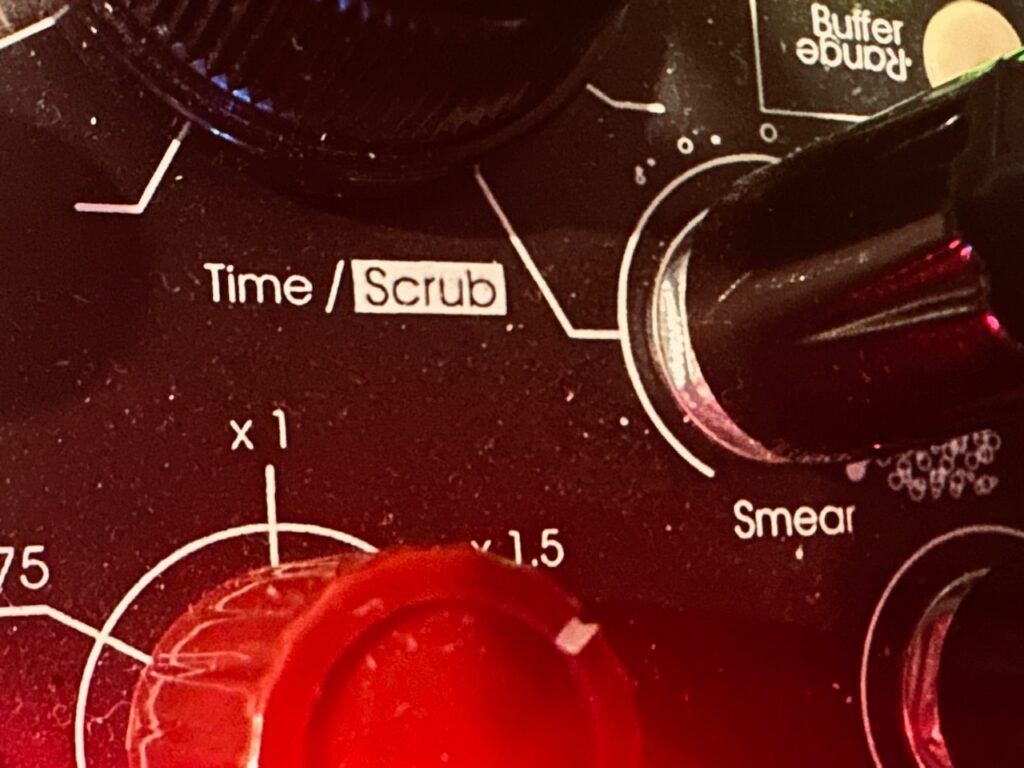
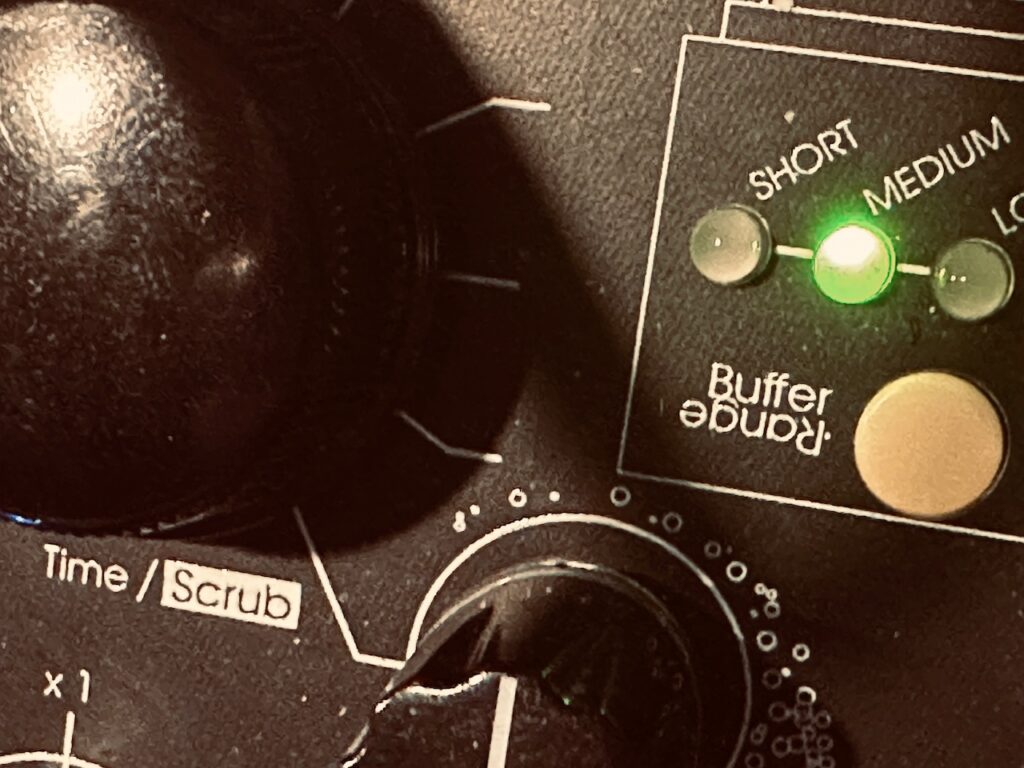
Modules Used:
Industrial Music Electronics Kermit Mk3
Synthesis Technology E370
Nonlinearcircuits The Hypster
Nonlinearcircuits Let’s Splosh
Verbos Multi-Delay Processor
Verbos Scan and Pan
Addac Systems Addac506 Stochastic Function Generator
ST Modular Sum Mix & Pan
Frap Tools Falistri
Frap Tools Sapel
Holocene Electronics Non-Linear Memory Machine
Pladask Elektrisk Dradd(s)
Intellijel Amps
AI Synthesis 018 Stereo Matrix Mixer
Knob Farm Ferry
Outboard Gear Used:
Walrus Audio Slöer
Performed and recorded in 1 take in AUM on iPad via the Expert Sleepers ES-9.
- Delays have long been used as preamps without the delay, and the MDP will be no exception. ↩︎

